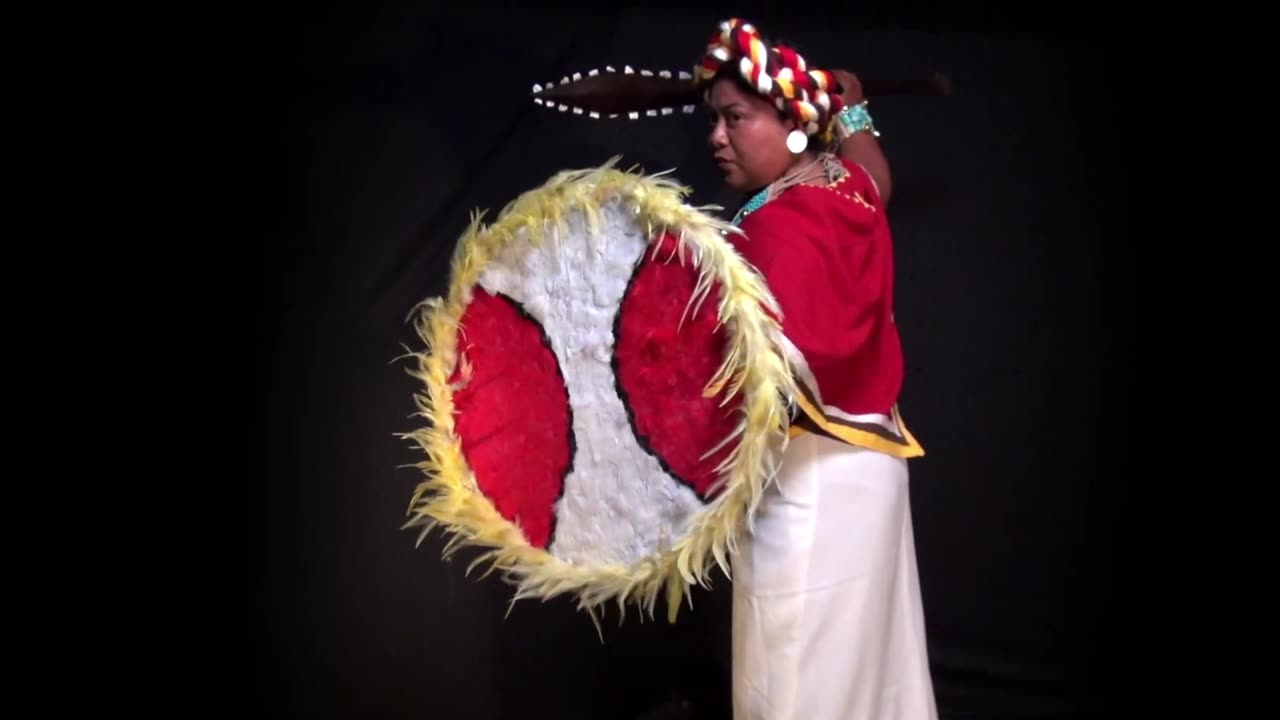Premium Only Content

Boffins Recreate Ancient Mexican Warrior Queen's Outfit
Boffins in Mexico have brought the pre-Hispanic era back to life with this stunning recreation of the outfit of a Mixtec warrior queen.
Experts from Mexico's National Institute of Anthropology (INAH) recreated the outfit worn by Lady Six Monkey to showcase the important role Mixtec women have played since the Postclassic period.
Lady Six Monkey (1073-1101) was a Mixtec warrior queen whose story is known from centuries-old codices.
The experts were able to painstakingly recreate the attire over six months after carrying out iconographic studies on the manuscripts.
Archaeologist Daniel Santos, who was heavily involved in the project, said he hopes the results will dispel the notion that women solely performed domestic chores during Mexico's pre-Columbian era.
In a statement obtained by Newsflash, INAH said: "Through a project that aims to showcase the hierarchical role that Mixtec women have had since the Postclassic period (900-1522 AD), which combines experiential archaeology and historical recreation, the Ministry of Culture of the Government of Mexico, through the National Institute of Anthropology and History (INAH), has reproduced the outfit of Lady Six Monkey, or Nunuu.
"The outfit was created with the collaboration of INAH Archaeological Salvage researcher Daniel Santos Hipolito, Atlatl Mexico Group ethnohistorian Jose Antonio Casanova Meneses, and weavers Cristina and Victoria Aguilar Rojas. The outfit is worn by singer Edith Aparicio Martinez from Tlaxiaquense.
"Lady Six Monkey was born in 1073 AD, and her name comes from the pre-Hispanic calendar day of her birth. She was the last daughter of Lady Nine Wind and Lord 10 Eagle, but as her brothers were sacrificed, she became the sole heir to the yuhui tayu, or lordship, of Jaltepec. Later, she would be called dzico yecu or 'War Quechquemitl', thanks to her victories in combat.
"Archaeologist Daniel Santos indicates that this proposal, based on experiential archaeology, which involves a process of replicating an object based on iconographic study of manuscripts, aims to promote scientific dissemination and break down archetypes that associate femininity only with domestic aspects during the pre-Columbian era. In his years of work, he says, he has not found ceramic representations of this woman, but has found her in nee nuhu (sacred skins) or codices."
Santos said: "To know what the characteristics of the attire of Lady Six Monkey were, I turned to the Nutall, Selden, Colombino, and Bodley codices, in which she is depicted as a ruler and warrior, with a braided headdress, earplugs, huipil, skirt, a snake or war quechquemitl (blouse) and her calendrical name; those symbolic references were the ones that we tried to reproduce, in the most faithful way, in this project."
INAH said: "Meanwhile, Jose Antonio Casanova, who has participated in similar recreations, such as the exhibition 'The Warriors of Mount Tlaloc', in 2016, tells that Lady Six Monkey also appears in different pictographic scenes, carrying wristbands, necklaces, and weapons.
"The specialist used museum materials, such as oak wood with flint inlays for the macanas (yutnu ndaha) and spears (tatnu); domestic bird feathers and woven cane on the shields (yusa), and imitations of green stone and brass bells for the necklace and arm ornaments.
"Regarding the textile manufacturing, Cristina and Victoria Aguilar took six months to make it, using backstrap loom. The symbols of the quechquemitl or dzico display the colours of the rattlesnake, seen in Sheet 5 of the Selden Codex, while the motifs or patterns correspond to the mat on which Lady Six Monkey lies, engraved in Sheet 8 of the same manuscript.
"Another relevant aspect that the team considered was the anthropometric proportion of the garment, so that it corresponded to the physique of individuals from the pre-Hispanic era of the Mixteca region. That's why they chose singer Edith Aparicio Martinez to wear it."
Aparicio Martinez said: "It is an honour to have been considered, I believe that this garment represents an emblem of empowerment for indigenous women. I am proud that it was made by hands from Tlaxiaco. Wearing this visual history on my body allows me to share knowledge about our ancestors, language, and roots that mark our essence as inhabitants of the Oaxacan Mixteca."
INAH said: "A promo with the testimonies of the project participants was premiered on INAH TV on International Women's Day. It will be exhibited in Tlaxiaco, Oaxaca, to promote a sense of belonging among its inhabitants."
-
 0:58
0:58
Viral Tab News
1 year agoYoung Seal Almost Throttled By Plastic Returned To The Wild
212 -
 LIVE
LIVE
Dr Disrespect
6 hours ago🔴LIVE - DR DISRESPECT - TRIPLE THREAT CHALLENGE - EXTREME EDITION
4,166 watching -
 LIVE
LIVE
Battleground with Sean Parnell
4 hours agoPresident Trump Is On FIRE w/ Savage Rich Baris
5,602 watching -
 LIVE
LIVE
Melonie Mac
51 minutes agoGo Boom Live Ep 34!
305 watching -
 53:11
53:11
Standpoint with Gabe Groisman
1 day agoTrump Is Crucial For Hostage Agreement Says Israeli Colonel
3603 -
 1:01:22
1:01:22
Anthony Pompliano
1 day ago $0.02 earnedTrump Inauguration Sends Bitcoin Flying
319 -
 15:21
15:21
LFA TV
7 hours agoWHY GOLD WILL CONTINUE TO SKYROCKET
459 -
 1:31:40
1:31:40
MTNTOUGH Fitness Lab
1 hour agoThe Power of Brotherhood: How Vulnerability and Grit Shape Resilient Men with Thosh Collins
3 -
 DVR
DVR
Redacted News
2 hours agoTRUMP JUST SENT PUTIN AN ULTIMATUM ON WAR, ZELENSKY PUSHES FOR U.S. BOOTS ON THE GROUND | Redacted
61.6K110 -
 1:02:19
1:02:19
In The Litter Box w/ Jewels & Catturd
22 hours agoStargate | In the Litter Box w/ Jewels & Catturd – Ep. 725 – 1/22/2025
78.5K31